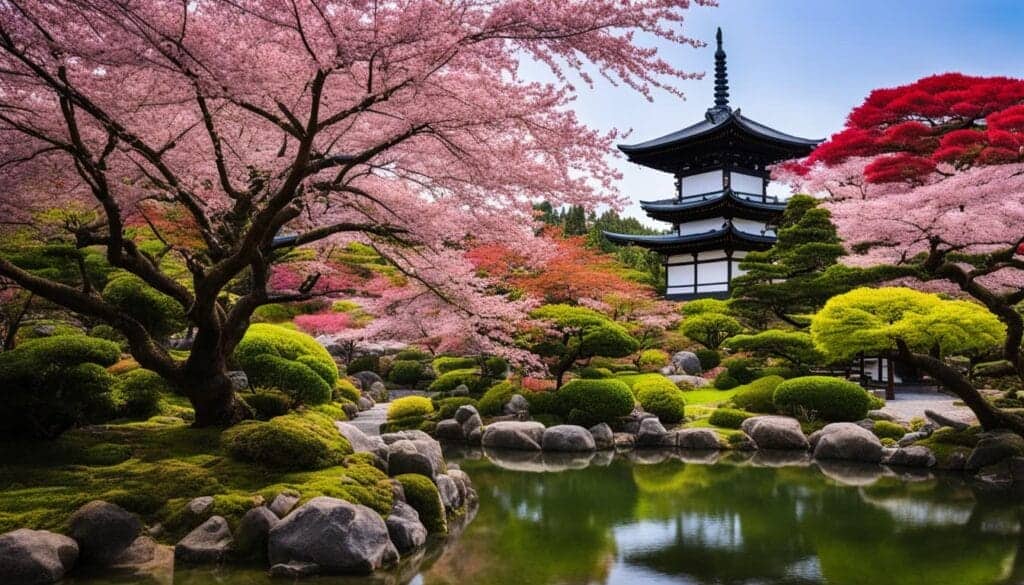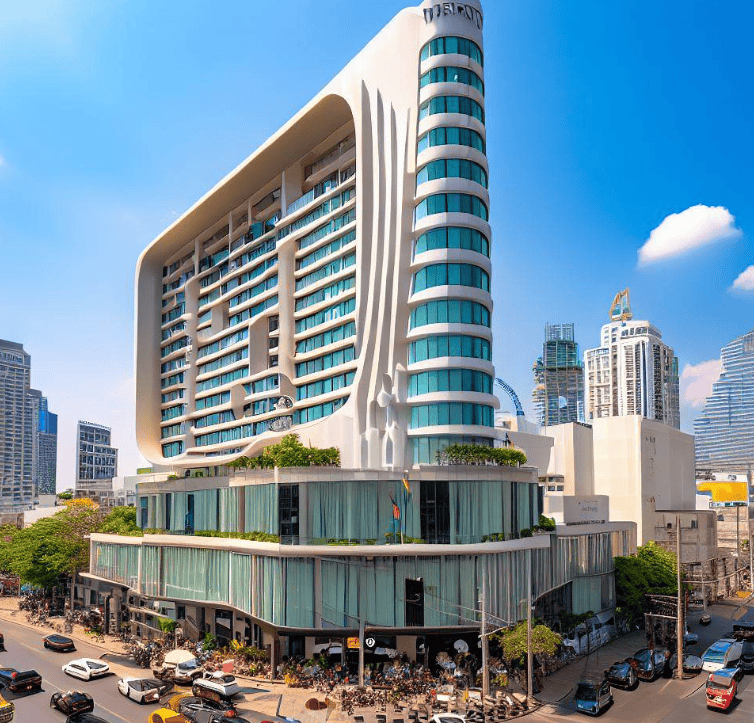
Visiting Tokyo feels like entering a world where tradition meets cutting-edge modernity. I remember my first visit during spring, wandering through Ueno Park with cherry blossoms painting the sky pink. Each season I’ve experienced in Tokyo has its magic, from the sweltering summer festivals to the serene winter illuminations.
Timing your visit to Tokyo is key if you are craving for an unforgettable experience. The city’s vibe, events, and even weather can dramatically shift from month to month.
Knowing when to go can make all the difference if you’re chasing cherry blossoms or looking to experience vibrant summer festivals.
This post will guide you through a month-by-month breakdown of the best times to visit Tokyo – helping you choose the perfect season to explore this mesmerizing city, and ensuring every moment of your trip is packed with excitement and wonder.
Understanding Tokyo’s Seasons
Spring (March – Early April)
Spring in Tokyo is nothing short of magical. The city transforms into a pastel wonderland as cherry blossoms, or sakura, bloom all over.
Typically from late March to early April, this period is one of the most popular times to visit Tokyo. If you go any later, you will risk the crowds during the Golden Week in Japan. The end of April through the first week of May is a popular time to visit Tokyo due to a series of public holidays known as “Golden Week.”
During this period, many Japanese citizens have time off from work and school, making it a prime time for travel and leisure activities. Visitors can expect larger crowds at popular tourist destinations and higher prices for accommodations and flights during Golden Week.
Peak Cherry Blossom Viewing Times:
- Late March to early April offers the best opportunity to witness cherry blossoms in full bloom.
- Hanami, or flower-viewing parties, are a beloved tradition during this season.
Weather Conditions and Average Temperatures:
- Average temperatures range from 10°C (50°F) in early March to about 15°C (59°F) by early April.
- Days are generally mild with cool evenings, making it perfect for outdoor activities.
Popular Attractions During Spring:
- Ueno Park: One of the most famous spots for cherry blossom viewing. With over 1,000 cherry trees, it’s a picturesque location for picnics and leisurely strolls.
- Shinjuku Gyoen National Garden: Another idyllic spot featuring diverse varieties of sakura trees.
- Sumida Park: Offers stunning views of cherry blossoms along the Sumida River.
Tips for Avoiding Crowds:
- Visit popular parks early in the morning or on weekdays to avoid the throngs of locals and tourists.
- Explore lesser-known spots like Asukayama Park or Koganei Park for a more serene experience.
While spring is undeniably enchanting, understanding Tokyo’s seasons can help tailor your visit to match your preferences. Each season offers its own unique charm and experiences.
For more insights on seasonal travel and hidden gems, check out our guide on seasonal foods in Scotland. Planning a trip to Taipei soon? Discover how to pick the best capsule hotel in Taipei with our comprehensive guide.
Summer (June – August)
Summer in Tokyo is vibrant and bustling. The city comes alive with festivals and events that showcase its rich culture.
Weather Description:
- Expect hot and humid conditions with temperatures ranging from 25°C (77°F) to 35°C (95°F).
- High humidity levels can make it feel even warmer, so staying hydrated is crucial.
Major Events and Festivals:
- Hanabi Fireworks Festival: A spectacular display held at various locations like Sumida River and Tokyo Bay.
- Obon Festival: A traditional event honoring ancestors with dances and lanterns.
Challenges of Traveling in Summer:
- Crowded tourist spots due to school holidays.
- Occasional typhoons can disrupt travel plans.
Tips for Enjoying Summer:
- Traveling with Kids: Visit air-conditioned attractions like museums or aquariums during peak heat hours.
- Take advantage of evening festivals that offer cooler temperatures and vibrant experiences.
Discover the best times to visit other Asian destinations like Hong Kong by reading our travel guide.
Autumn (September – November)
Autumn brings a splash of color to Tokyo as leaves turn shades of red, orange, and yellow. It’s a beautiful time to explore the city’s parks and gardens.
Overview of Autumn Colors:
- Mid-November is typically when autumn foliage peaks.
- Parks like Rikugien Garden and Icho Namiki Avenue offer breathtaking views.
Recommended Activities:
- Take leisurely walks through tree-lined streets such as Meiji Jingu Gaien’s Ginkgo Avenue.
- Visit cultural sites like Sensoji Temple under a canopy of autumn leaves.
Avoiding Crowds During National Holidays:
- Avoid traveling during Silver Week in late September when many locals take holidays.
- Plan visits to popular spots early

Summer (June – August)
Tokyo’s summer is a whirlwind of vibrant festivals, buzzing streets, and sizzling temperatures. If you’re planning to visit during this time, here’s what you need to know.
Summer Weather and Humidity
The summer months in Tokyo are characterized by high humidity and temperatures that often soar above 30°C (86°F). The city experiences its rainy season in June, followed by hot and sticky weather in July and August.
While the heat can be intense, it also brings a unique atmosphere to the bustling metropolis.
Don’t forget your sunscreen and a water bottle to stay hydrated!
Major Events and Festivals
Summer is festival season in Tokyo. Here are some must-see events:
- Hanabi Fireworks Festivals: Tokyo’s skies light up with spectacular fireworks displays. The Sumida River Fireworks Festival is one of the most famous, drawing massive crowds every year.
- Obon Festival: This traditional event honors the spirits of ancestors. You’ll find Bon Odori dance festivals happening throughout the city, offering a glimpse into Japan’s rich cultural heritage.
- Tanabata Festival: Held in early July, this festival celebrates the meeting of two deities represented by stars. Streets are adorned with colorful decorations and wishes written on paper strips.
Challenges of Traveling in Summer
Traveling to Tokyo in summer does come with its set of challenges:
- Crowds: Popular attractions get crowded as locals and tourists alike flock to festivals and events. To make your trip enjoyable:
- Visit major sights early in the morning.
- Use public transportation efficiently.
- Book accommodations well in advance.
- Typhoons: Typhoon season peaks from August to September. Stay updated on weather forecasts and have a backup plan for indoor activities if needed.
Tips for Enjoying Summer with Kids
Traveling with kids? Here’s how you can beat the heat while keeping them entertained:
- Indoor Attractions: Tokyo has many kid-friendly indoor spots like KidZania Tokyo, Odaiba’s teamLab Borderless digital art museum, and various aquariums.
- Water Parks: Cool down at water parks such as Yomiuriland Water Amusement Island or Toshimaen Niwa no Yu.
- Evening Activities: Take advantage of cooler evenings by enjoying night markets or evening walks along illuminated streets.
Exploring Tokyo during summer offers unforgettable experiences despite the heat. Whether you’re marveling at fireworks or dancing at a traditional festival, there’s something magical about this season.
Ensuring you have good travel insurance is essential if you travel during typhoon season—find out how to score great deals here.
Autumn (September – November)
Autumn in Tokyo is a magical time. The city transforms into a canvas of vibrant reds, oranges, and yellows as the autumn foliage, or koyo reaches its peak.
If you’re wondering about the best time to visit Tokyo for this spectacle, aim for mid-November. You’ll witness an explosion of colors that will make your trip unforgettable.
Autumn Colors and Peak Times
Peak Foliage Viewing: Mid-November is when Tokyo’s parks and streets are ablaze with autumn hues. Popular spots include:
- Shinjuku Gyoen National Garden: A sprawling park perfect for a leisurely stroll.
- Koishikawa Korakuen Garden: Offers picturesque views combined with historic architecture.
- Icho Namiki Avenue: Famous for its golden ginkgo trees, this avenue becomes a must-visit during fall.
Recommended Activities and Places to Visit
Sightseeing Hotspots:
- Meiji Shrine: Nestled within a forest, this shrine provides a serene escape from the city’s hustle.
- Mount Takao: Just a short train ride from central Tokyo, it’s an ideal hiking spot enveloped in autumn colors.
Avoiding Crowds
- Travel during weekdays to sidestep the weekend rush.
- Visit early in the morning to enjoy these sites before they get crowded.
Autumn also brings several national holidays, such as Culture Day and Labor Thanksgiving Day, which can attract large crowds to popular attractions. Planning your visit around these dates can help you avoid the busiest times.
For those interested in budget-friendly travel tips during autumn, check out our Packing Hacks for Budget Travelers. Efficient packing can make all the difference when navigating Tokyo’s bustling streets and public transport.
Whether you’re soaking in the colors at Shinjuku Gyoen or hiking up Mount Takao, autumn in Tokyo offers unique experiences that cater to every traveler’s taste.
Winter (December – February)
Winter in Tokyo, while mild compared to other regions in Japan, brings its own unique charm. The city transforms into a dazzling wonderland with winter illuminations and festive decorations. Temperatures typically range from 2°C (36°F) to 12°C (54°F), making it quite comfortable for exploring.
Unique Experiences Available During Winter
1. Holiday Lights: Tokyo is renowned for its breathtaking winter illuminations. Spots like Shibuya Blue Cave and Roppongi Hills dazzle visitors with millions of LED lights creating magical displays. Don’t miss the Marunouchi Illumination near Tokyo Station, where the streets are adorned with sparkling lights.
2. New Year’s Celebrations: Experience Japanese New Year traditions by visiting Meiji Shrine on January 1st. Join locals in “hatsumode,” the first shrine visit of the year, and witness traditional ceremonies. It’s an immersive cultural experience that gives you a glimpse into Japan’s rich traditions.
3. Day Trips to Ski Resorts: If you’re craving some snow, several ski resorts are accessible from Tokyo for a perfect day trip. Popular destinations include Gala Yuzawa and Hakuba Valley, where you can enjoy skiing or snowboarding and then easily return to the city.
Mild Winter Weather Compared to Other Regions in Japan
Tokyo’s climate during winter is relatively mild, especially when compared to the heavy snowfall and freezing temperatures experienced in northern parts of Japan like Hokkaido. This makes it easier to enjoy outdoor activities without battling extreme cold.
Planning Tips
- Layer Up Smartly: Pack layers to stay warm without being bulky. A good coat, scarf, gloves, and thermal wear will keep you comfortable.
- Book Early for Popular Attractions: Winter is peak season for certain attractions like illumination events and ski resorts. Booking in advance can save money and guarantee your spot.
For more budget-friendly travel tips on how to make your winter trip affordable, check out our Budget Travel Guide.
Exploring Tokyo during winter offers an array of unforgettable experiences—from enchanting lights to invigorating day trips—ensuring every moment is filled with wonder.
Comparison of Hotel Rates in Tokyo: Peak Season vs. Low Season
| Hotel Category | Peak Season Rates (March to May) | Low Season Rates (January to March) |
|---|---|---|
| Luxury Hotels | $300 – $500 per night | $200 – $300 per night |
| Mid-Range Hotels | $150 – $250 per night | $100 – $150 per night |
| Budget Hotels | $80 – $120 per night | $60 – $80 per night |
The difference in hotel rates between the peak season and the low season can be significant, allowing you to save money that can be spent on exploring more of what Tokyo has to offer.
[su_table]
| Season | Pros | Cons |
|---|---|---|
| Winter | Clear skies | Cold temperatures |
| Spring | Cherry blossoms | High tourist numbers |
| Summer | Exciting festivals | Hot and humid weather |
| Autumn | Stunning foliage | Crowded popular areas |
[/su_table]
Special Considerations for Planning Your Trip
Planning a trip to Tokyo? Timing is everything, especially when it comes to navigating Japan’s national holidays. One standout period is Golden Week, which typically spans from late April to early May. During this time, several public holidays are packed into one week, making it a popular vacation period for locals and tourists alike.
Key Holidays During Golden Week
- Showa Day (April 29): Celebrating the birthday of Emperor Showa.
- Constitution Memorial Day (May 3): Observing the promulgation of the post-war constitution.
- Greenery Day (May 4): Honoring nature and the environment.
- Children’s Day (May 5): Focusing on children’s happiness and health.
Impact on Travel Plans
Golden Week can significantly impact your travel plans:
- Crowded Attractions: Major tourist spots like Tokyo Disneyland, Sensoji Temple, and Shibuya Crossing will be bustling with both locals and international visitors.
- Higher Prices: Expect accommodation prices to spike due to high demand. Booking well in advance is crucial if you plan to visit during this period.
- Transportation Hurdles: Trains, buses, and flights might be fully booked or experience delays. For example, the Shinkansen (bullet train) routes are often crowded.
Smart Tips for Navigating Golden Week
- Book Early: Whether it’s hotels or transportation, secure your reservations months ahead.
- Explore Less Touristy Areas: Discover hidden gems in neighborhoods like Shimokitazawa or Yanaka. These areas offer unique experiences away from the usual tourist hustle.
- Plan Indoor Activities: If crowds aren’t your thing, consider exploring Tokyo’s myriad of museums or indulging in some retail therapy at quieter shopping districts.
Planning around these national holidays ensures a smoother travel experience. If you need more inspiration for planning trips around busy periods, check out our guide to shopping in Taipei or discover affordable accommodations in Bangkok.
Understanding these nuances helps make your Tokyo adventure not just memorable but also stress-free.
Budget-Friendly Travel Tips for Each Season
Traveling to Tokyo on a budget? No worries! We’ve got you covered with some fantastic tips to keep your trip affordable and unforgettable. From accommodation to dining, here’s how to make the most of each season without breaking the bank.
Affordable Places to Stay
Peak Seasons:
- Spring & Autumn: These are popular times to visit Tokyo due to the cherry blossoms and fall foliage. Consider staying in budget-friendly hostels or capsule hotels. Areas like Asakusa and Ueno offer great options that are both affordable and centrally located.
- Summer: Although it’s hot and humid, summer brings festivals galore. Look for university dormitories that rent out rooms during summer break or try budget business hotels in districts like Ikebukuro.
Off-Seasons:
- Winter: Winter is less crowded, making it easier to find deals on accommodations. Explore Airbnb options for cozy stays or book early for discounts at budget chain hotels like Toyoko Inn.
- Early Spring (March) & Late Autumn (November): These shoulder seasons can offer lower rates. Check out guesthouses in neighborhoods like Yanaka for a more local feel.
Hidden Dining Treasures
Tokyo is a food lover’s paradise, even on a budget! Here are some wallet-friendly dining options:
- Convenience Stores (Konbini): Don’t underestimate the culinary delights at 7-Eleven, Lawson, or FamilyMart. You’ll find everything from sushi rolls to bento boxes at reasonable prices.
- Depachika (Department Store Food Basements): Places like Isetan and Takashimaya have basement food halls brimming with affordable yet delicious eats. Perfect for grabbing lunch on-the-go.
- Ramen Shops: Slurp away at local ramen joints where a hearty bowl of noodles can cost as little as ¥500. Try Ichiran or Ippudo for an authentic experience.
- Izakayas: These Japanese pubs often have happy hour deals and set menus that are easy on the wallet. Head to Shibuya or Shinjuku for some lively options.
For more travel inspiration beyond Tokyo, you might enjoy our guide on the best time to visit South Korea and tips for exploring other incredible destinations affordably.


